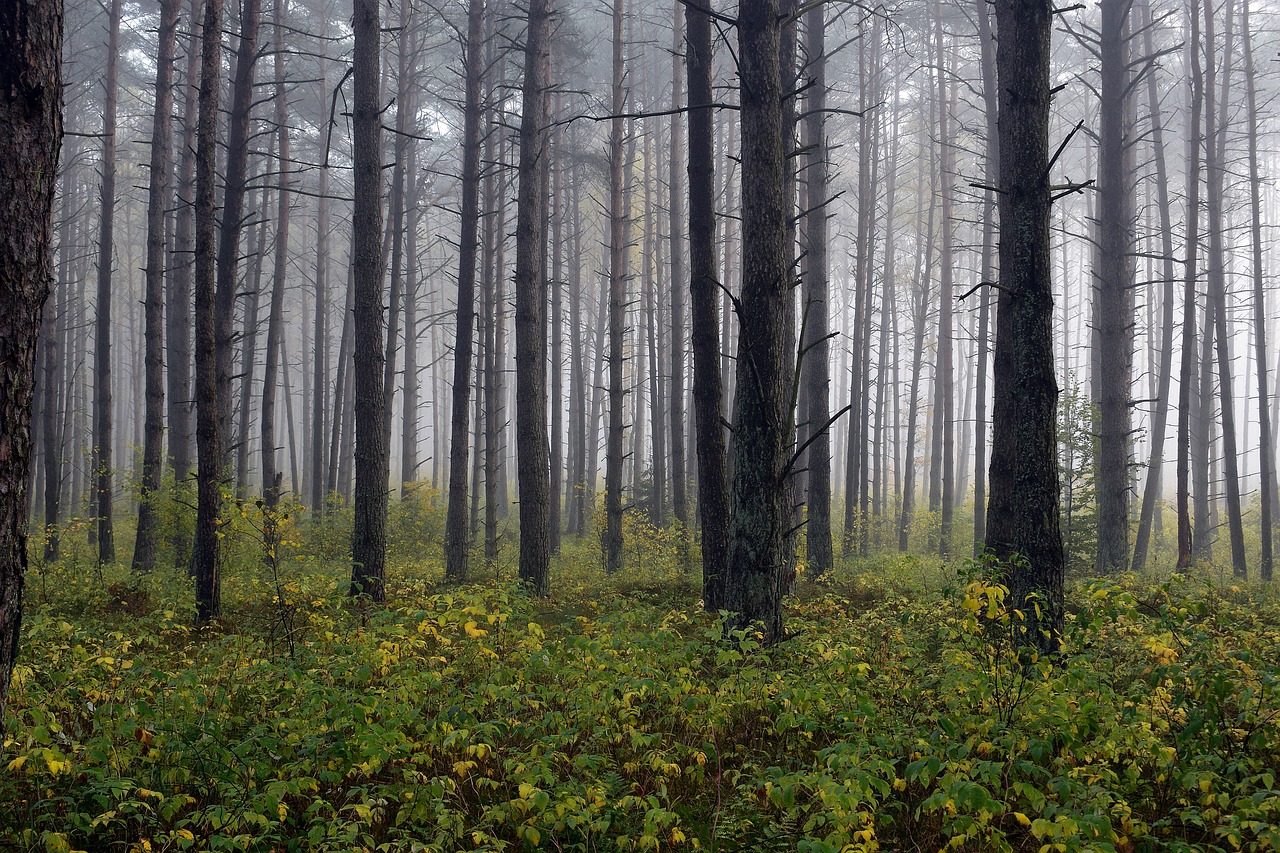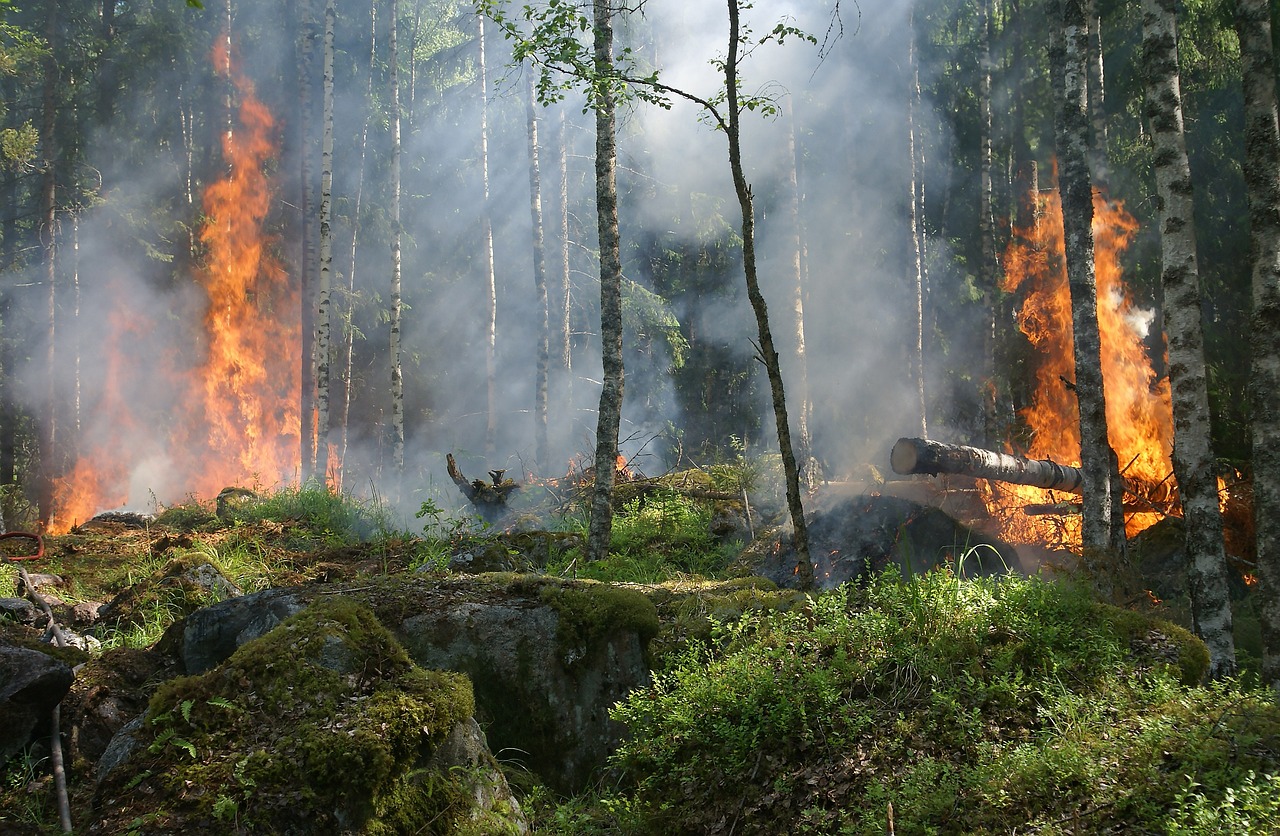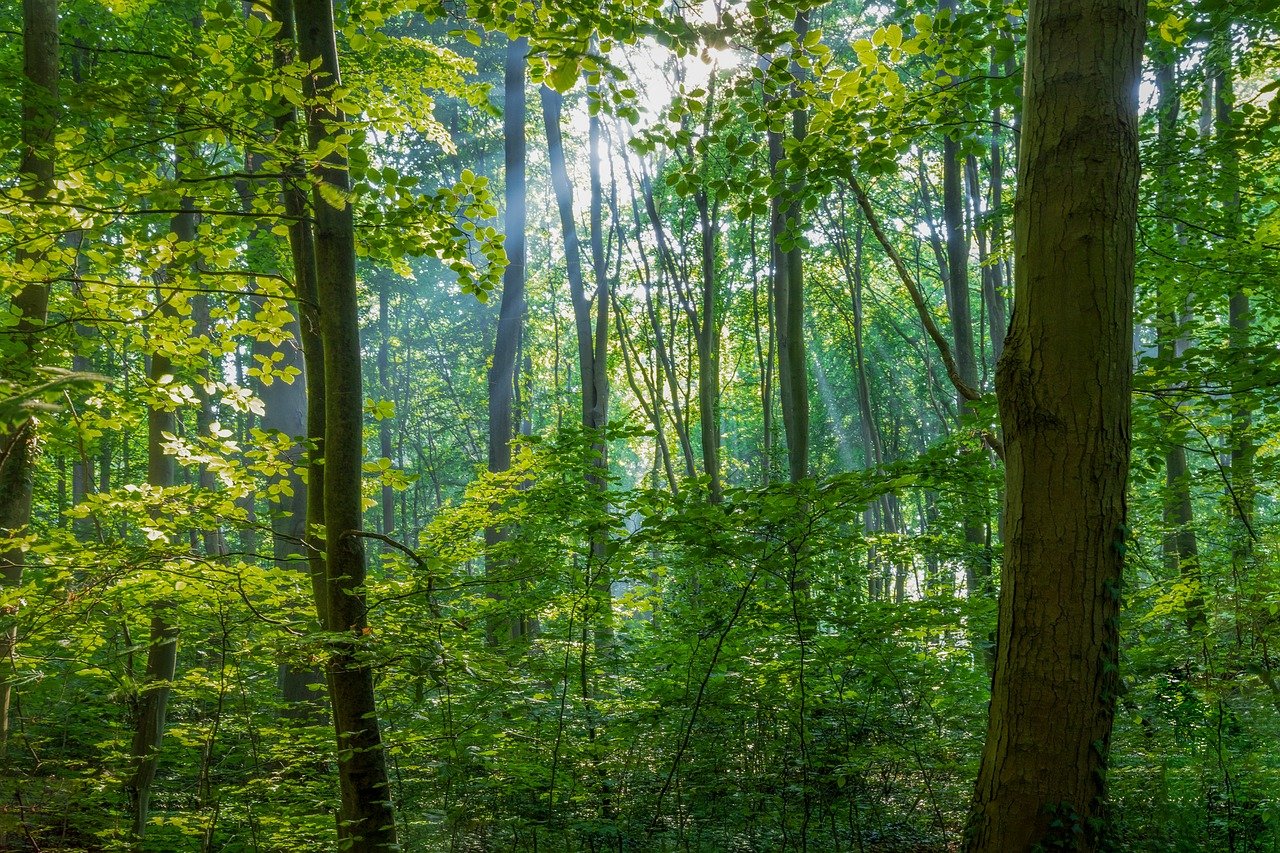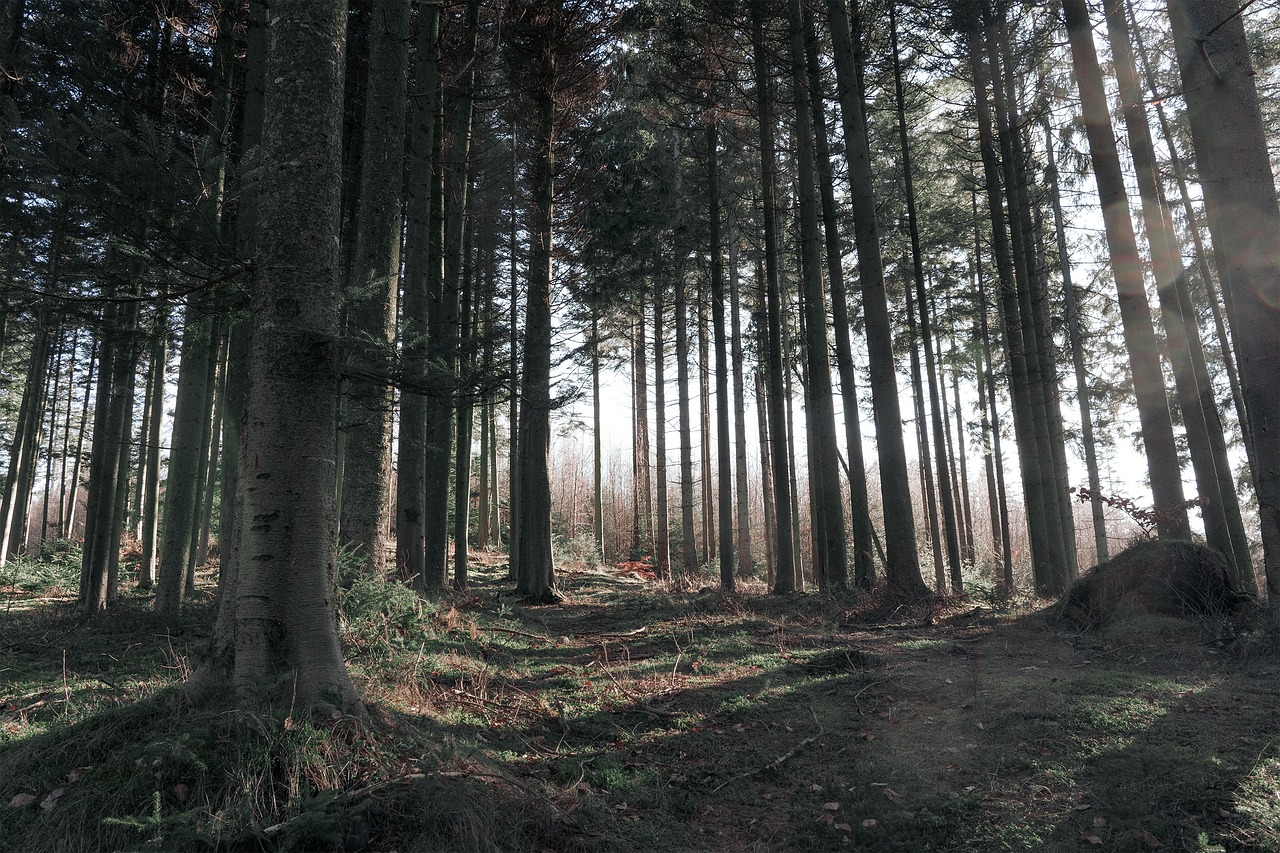Reviving the Earth's Lungs: The Importance of Forest Conservation
Forests are often referred to as the lungs of our planet, playing a crucial role in maintaining the balance of our ecosystem. They are not just a collection of trees; they are vibrant ecosystems teeming with life, acting as natural air filters that absorb carbon dioxide and release oxygen. In a world increasingly threatened by climate change, deforestation, and urbanization, the need for forest conservation has never been more urgent. Protecting our forests is not merely an environmental issue; it is a matter of survival for many species, including humans. So, what can we do to ensure these vital ecosystems thrive for generations to come?
Forests are essential in regulating the Earth's climate by absorbing carbon dioxide (CO2), one of the primary greenhouse gases responsible for climate change. When we cut down forests, not only do we lose this natural carbon sink, but we also release stored CO2 back into the atmosphere, exacerbating global warming. The relationship between forests and climate regulation is akin to a well-oiled machine; when one part is compromised, the entire system suffers. Forests help maintain global temperatures, and their preservation is critical for mitigating the impacts of climate change.
Forests are home to an astonishing diversity of life. They provide habitat for countless species, ranging from the smallest insects to the largest mammals. In fact, it is estimated that over 80% of terrestrial biodiversity is found in forest ecosystems. This rich biodiversity is not just beautiful to behold; it also provides essential ecosystem services that sustain life on Earth. From purifying water and air to regulating the climate and supporting soil health, forests are indispensable to our survival.
Forests serve as critical habitats for a multitude of wildlife species. Imagine a world without the songs of birds or the rustling of leaves as animals scurry about; it would be eerily silent. The relationship between forest conservation and wildlife protection is deeply intertwined. When we conserve forests, we are also preserving the habitats that countless species rely on for food, shelter, and breeding. This interdependence highlights the urgent need for habitat preservation, as the loss of forests often leads to the extinction of species that cannot adapt to new environments.
Many endangered species depend on forests for their survival. For example, the Sumatran orangutan, which is critically endangered, relies heavily on the tropical forests of Indonesia. As deforestation continues at alarming rates, the habitats of such species are being destroyed, pushing them closer to extinction. The impact of deforestation is not just a local issue; it has global implications, affecting biodiversity and the health of our planet's ecosystems.
Restoring degraded forest areas can help revive ecosystems and promote biodiversity. Think of it like bringing a once-vibrant community back to life. Strategies for forest restoration include replanting native species, controlling invasive species, and implementing sustainable land management practices. These efforts not only help restore ecosystems but also enhance climate resilience, making forests better equipped to withstand the impacts of climate change.
Sustainable forest management is key to conservation efforts. It involves balancing ecological health with economic needs, ensuring that we can utilize forest resources without compromising their integrity. Effective management practices include selective logging, controlled burns, and community-based forestry initiatives. By adopting these practices, we can ensure that forests continue to provide vital resources while maintaining their ecological functions.
Despite their importance, forests face numerous threats, including deforestation, climate change, and urbanization. Each of these challenges has profound implications for global ecosystems. For instance, deforestation not only reduces the number of trees but also disrupts the intricate web of life that depends on forests. As we delve deeper into these threats, it becomes clear that urgent action is needed to protect our planet's vital resources.
Deforestation is a major concern impacting forest health. The primary drivers of deforestation include agriculture, logging, and infrastructure development. As the global population continues to grow, the demand for land and resources increases, leading to the destruction of forests. This situation calls for immediate intervention, as the loss of forests contributes to climate change, biodiversity loss, and the degradation of ecosystem services.
Climate change poses significant risks to forest ecosystems. Changing weather patterns, such as increased temperatures and altered precipitation, can affect tree growth and species composition. Additionally, forests are more susceptible to pests and diseases in a warming climate. This section underscores the importance of understanding how climate change affects forest health and biodiversity, urging us to take action to mitigate these impacts.
Engaging local communities is crucial for successful forest conservation. When communities are involved in protecting their local forests, they are more likely to adopt sustainable practices and advocate for conservation efforts. This collaborative approach fosters a sense of ownership and responsibility towards the environment, making conservation a shared goal.
Indigenous communities often possess valuable knowledge about forest conservation. Their traditional practices, honed over generations, can offer insights into sustainable land management. By integrating this knowledge into modern conservation efforts, we can create more effective strategies that respect both cultural heritage and ecological integrity.
Raising awareness about forest conservation is essential. Educational initiatives that inform the public about the importance of forests can foster a culture of conservation. Programs in schools, community centers, and online platforms can help spread the message, encouraging individuals to take action in their own lives.
Numerous global initiatives are dedicated to forest conservation. These programs aim to protect forests and promote sustainable practices worldwide. By participating in these initiatives, countries can work together to address the challenges facing forests and ensure their preservation for future generations.
International cooperation is vital for forest conservation. Major treaties and agreements, such as the Paris Agreement and the Convention on Biological Diversity, focus on sustainable forest management and protection. These frameworks encourage countries to collaborate and share resources in the fight against deforestation and biodiversity loss.
Examining successful conservation projects can provide valuable insights. For instance, the Great Green Wall initiative in Africa aims to combat desertification by restoring 100 million hectares of land by 2030. Such case studies demonstrate effective forest conservation strategies and their positive outcomes, inspiring others to take similar action.
- Why are forests important for the environment?
Forests play a crucial role in regulating the climate, supporting biodiversity, and providing essential ecosystem services.
- What are the main threats to forests?
The primary threats include deforestation, climate change, and urbanization, which all contribute to the degradation of forest ecosystems.
- How can communities help in forest conservation?
Local communities can engage in sustainable practices, participate in conservation initiatives, and advocate for policies that protect forests.
- What are some successful forest conservation projects?
Initiatives like the Great Green Wall and various reforestation programs worldwide demonstrate effective strategies for forest conservation.

The Role of Forests in Climate Regulation
Forests are often referred to as the Earth's lungs, and for good reason! They play a crucial role in regulating the climate by acting as natural carbon sinks. This means that they absorb carbon dioxide (CO2) from the atmosphere, which is a significant contributor to climate change. Think of forests as giant sponges, soaking up CO2 and releasing oxygen, thus maintaining the balance that is vital for life on our planet. Without forests, the levels of CO2 in the atmosphere would rise dramatically, leading to more severe climate impacts.
But how exactly do forests contribute to climate regulation? Let’s break it down:
- Carbon Sequestration: Trees absorb CO2 during photosynthesis, storing carbon in their biomass and soil. This process not only reduces greenhouse gases but also helps in mitigating the effects of climate change.
- Temperature Regulation: Forests help in maintaining local and global temperatures. They provide shade and release moisture into the air through a process called transpiration, which cools the surrounding environment.
- Water Cycle Maintenance: Healthy forests contribute to the water cycle by facilitating rainfall and maintaining groundwater levels. This is essential for both ecosystems and human agriculture.
To put things into perspective, a single mature tree can absorb approximately 48 pounds of CO2 annually. Now, imagine the impact of millions of trees working together! According to a recent study, forests worldwide absorb about 2.6 billion metric tons of CO2 every year. This is equivalent to the emissions produced by over 500 million cars!
However, the effectiveness of forests in climate regulation is under threat due to various factors, such as deforestation and climate change itself. When forests are cut down or degraded, not only do we lose their ability to absorb CO2, but the carbon stored in trees is released back into the atmosphere, exacerbating the problem. Therefore, it is crucial to recognize the importance of forest conservation and restoration as a means of combating climate change.
In conclusion, the role of forests in climate regulation cannot be overstated. They are essential for absorbing carbon, regulating temperatures, and maintaining the water cycle. Protecting our forests is not just about saving trees; it’s about securing a sustainable future for our planet. As we continue to face the challenges of climate change, let’s remember that every tree counts in the fight for a healthier Earth.
- Why are forests important for climate change? Forests absorb CO2, which helps mitigate climate change and regulates global temperatures.
- How does deforestation affect climate? Deforestation releases stored carbon back into the atmosphere, increasing greenhouse gas emissions and worsening climate change.
- What can we do to help protect forests? Supporting sustainable forest management, participating in reforestation efforts, and raising awareness about the importance of forests are key steps we can take.

Biodiversity and Ecosystem Services
Forests are often referred to as the "lungs of our planet," and for good reason. They play a crucial role in maintaining biodiversity and providing essential ecosystem services that sustain life on Earth. When we think about forests, we often picture towering trees and lush undergrowth, but they are so much more than just a collection of plants. They are vibrant ecosystems teeming with life, offering a habitat for countless species, from the smallest insects to the largest mammals.
The biodiversity found within forests is staggering. In fact, forests are home to over 80% of the terrestrial species of animals, plants, and fungi. This rich tapestry of life is vital for several reasons:
- Genetic Diversity: A diverse gene pool among species enhances resilience against diseases and environmental changes.
- Food Security: Many of the foods we consume, including fruits, nuts, and spices, are derived from forest ecosystems.
- Medicinal Resources: Numerous medicines are derived from forest plants, highlighting the importance of preserving these ecosystems.
Beyond providing habitat and resources, forests also offer a plethora of ecosystem services that benefit humanity. These services can be categorized into four main types:
| Type of Ecosystem Service | Description |
|---|---|
| Provisioning Services | These include the products obtained from forests, such as timber, fuel, and food. |
| Regulating Services | Forests help regulate climate, air quality, and water cycles, contributing to a stable environment. |
| Supporting Services | These services are necessary for the production of all other ecosystem services, such as soil formation and nutrient cycling. |
| Cultural Services | Forests provide recreational, aesthetic, and spiritual benefits, enriching our lives and well-being. |
In essence, the interconnectedness of life within forests creates a delicate balance that supports not only the plants and animals that inhabit them but also human societies. When we lose forests, we don't just lose trees; we lose the intricate web of life that sustains us. The decline in biodiversity can lead to the collapse of ecosystems, which can have dire consequences for food security, health, and climate stability.
Therefore, recognizing the importance of biodiversity and the ecosystem services that forests provide is crucial for conservation efforts. By protecting these natural treasures, we are not only safeguarding the future of countless species but also ensuring a sustainable environment for generations to come. So, the next time you take a walk in the woods, remember that you are stepping into a world of incredible diversity and essential services that are vital for our planet's health.
Q1: Why are forests important for biodiversity?
A1: Forests provide habitat for a vast array of species, contributing to genetic diversity and ecosystem stability.
Q2: What ecosystem services do forests provide?
A2: Forests offer provisioning, regulating, supporting, and cultural services that benefit both nature and humanity.
Q3: How does deforestation impact biodiversity?
A3: Deforestation leads to habitat loss, which can result in the extinction of species and a decline in ecosystem health.
Q4: What can individuals do to help conserve forests?
A4: Individuals can support sustainable products, participate in conservation initiatives, and raise awareness about the importance of forests.

Habitat for Wildlife
Forests are not just a collection of trees; they are vibrant ecosystems teeming with life. Imagine walking through a lush forest, the sunlight filtering through the leaves, and the sounds of chirping birds and rustling leaves surrounding you. This enchanting environment serves as a critical habitat for countless species, from the smallest insects to majestic mammals. Each layer of the forest, from the canopy to the forest floor, provides unique niches that support diverse wildlife populations. The intricate web of life in forests is essential for maintaining ecological balance and health.
Forests offer shelter, food, and breeding grounds for wildlife, making them indispensable for many species. For instance, birds build their nests in the branches, while mammals find refuge in tree hollows or underbrush. The interdependence between these species and their forest habitat is profound. When we talk about forest conservation, we are essentially talking about protecting the homes of these animals. Without forests, many species would face extinction, leading to a domino effect that could disrupt entire ecosystems.
Consider the following key aspects of how forests serve as habitats for wildlife:
- Diversity of Species: Forests are home to approximately 80% of the world's terrestrial biodiversity. This includes a variety of plants, animals, fungi, and microorganisms that interact in complex ways.
- Food Sources: Many animals depend on forests for their food. From fruits and nuts to leaves and bark, the forest provides a buffet of options that sustain wildlife.
- Breeding Grounds: Certain species rely on specific forest conditions for breeding. For example, amphibians often require moist environments found in forested areas to reproduce.
However, the relationship between forests and wildlife is fragile. As we encroach on these natural habitats through urbanization and agriculture, we threaten the very existence of these species. Deforestation not only removes the physical space animals need to thrive but also disrupts the delicate balance of ecosystems. For example, the loss of trees can lead to soil erosion, which in turn affects water quality and availability, further endangering wildlife.
To combat these challenges, conservation efforts must prioritize the protection of forest habitats. This includes establishing protected areas, promoting sustainable land-use practices, and restoring degraded forests. By doing so, we can ensure that forests continue to serve as vital habitats for wildlife, preserving the rich biodiversity that is essential for a healthy planet.
What is the importance of forests for wildlife?
Forests provide essential habitats, food sources, and breeding grounds for a vast array of wildlife species, playing a crucial role in maintaining biodiversity.
How does deforestation impact wildlife?
Deforestation leads to habitat loss, which can result in the decline or extinction of species that rely on forests for survival, disrupting entire ecosystems.
What can be done to protect wildlife habitats in forests?
Conservation efforts, such as establishing protected areas, promoting sustainable practices, and restoring degraded forests, are vital for protecting wildlife habitats.

Endangered Species and Forests
Forests are not just a collection of trees; they are intricate ecosystems teeming with life. Within these green havens, countless species thrive, many of which are teetering on the brink of extinction. The connection between endangered species and forests is profound, as these habitats provide the essential resources that wildlife needs to survive. From the majestic Bengal tiger prowling through the dense underbrush to the vibrant birds flitting between branches, forests serve as a sanctuary for these vulnerable populations.
However, the relentless advance of deforestation and habitat destruction poses a dire threat to these species. As trees are cut down, the delicate balance of the ecosystem is disrupted, leading to a cascade of negative effects. For instance, when a forest is cleared, it not only removes the physical habitat but also affects the food sources and breeding grounds for countless animals. This can lead to a decline in population numbers and, in some cases, extinction. The World Wildlife Fund estimates that approximately 80% of the world's terrestrial biodiversity is found in forests, making their conservation critical for the survival of many endangered species.
Some notable examples of endangered species that rely heavily on forest ecosystems include:
- Sumatran Orangutan - These great apes are critically endangered due to habitat loss from palm oil plantations.
- Amur Leopard - With fewer than 100 individuals left in the wild, this elusive feline depends on the temperate forests of the Russian Far East.
- Javan Rhinoceros - Once widespread, this species is now confined to a single national park in Indonesia, where forest preservation is vital for its survival.
Efforts to combat these threats are underway, focusing on both conservation and restoration. By implementing sustainable forest management practices, we can help create a safer environment for endangered species. This includes establishing protected areas, enforcing anti-logging laws, and promoting reforestation projects that restore habitats lost to deforestation.
In conclusion, the plight of endangered species is intricately linked to the health of our forests. By prioritizing forest conservation, we not only safeguard these vulnerable animals but also ensure the preservation of biodiversity and the overall health of our planet. The call to action is clear: we must rally together to protect the lungs of our Earth, ensuring a future where both forests and their inhabitants can thrive.
Q: Why are forests important for endangered species?
A: Forests provide essential habitats, food sources, and breeding grounds for many endangered species. Their destruction leads to loss of biodiversity and threatens the survival of these animals.
Q: What can be done to help endangered species in forests?
A: Supporting conservation efforts, promoting sustainable forestry practices, and participating in reforestation projects can significantly help protect endangered species and their habitats.
Q: Are there specific organizations focused on forest conservation?
A: Yes, numerous organizations, such as the World Wildlife Fund (WWF) and Greenpeace, work tirelessly to protect forests and the species that inhabit them through advocacy, education, and direct action.
Q: How does climate change affect endangered species in forests?
A: Climate change alters weather patterns, affects food availability, and can lead to habitat loss, making it even more difficult for endangered species to survive in their natural environments.

Restoration of Degraded Forests
Restoring degraded forests is not just an environmental necessity; it's a powerful act of rejuvenation that can breathe life back into our planet. Think of it as giving a second chance to ecosystems that have been pushed to the brink. When we talk about forest restoration, we are diving into a world where nature can heal itself, provided we lend a helping hand. It's akin to tending to a garden that has been neglected; with the right care, it can flourish once again.
One of the most effective strategies for restoring degraded forests is through reforestation, which involves planting native tree species that are well-adapted to the local environment. This not only helps in re-establishing the tree canopy but also supports the return of various wildlife species that depend on these habitats. Additionally, employing agroforestry practices can create a harmonious balance between agriculture and forest conservation. By integrating trees into agricultural lands, we can enhance biodiversity while also improving crop yields.
Moreover, community involvement plays a crucial role in the success of restoration projects. Engaging local communities ensures that the restoration efforts are sustainable and culturally appropriate. For instance, involving indigenous peoples who have a deep-rooted understanding of their local ecosystems can lead to more effective and enduring restoration practices. Their traditional knowledge can guide us in selecting the right species to plant and the best techniques to use.
To illustrate the impact of forest restoration, consider the following statistics:
| Restoration Method | Benefits |
|---|---|
| Reforestation | Increases carbon sequestration, restores habitat, improves soil health |
| Agroforestry | Enhances biodiversity, increases agricultural productivity, reduces soil erosion |
| Community-led initiatives | Ensures cultural relevance, promotes local stewardship, enhances ecological knowledge |
In addition to these methods, monitoring and adaptive management are essential components of successful restoration. Regularly assessing the health of restored areas allows us to make necessary adjustments to our strategies. This flexibility can mean the difference between a thriving ecosystem and one that continues to struggle. By learning from our successes and failures, we can refine our approaches and ensure that our restoration efforts yield the best possible outcomes.
In conclusion, the restoration of degraded forests is a multifaceted endeavor that requires a blend of science, community engagement, and a deep respect for nature's inherent wisdom. By embracing these strategies, we can not only restore the lungs of our planet but also create resilient ecosystems that will benefit future generations. After all, a world rich in forests is a world rich in life.
- What is forest restoration? Forest restoration refers to the process of assisting the recovery of forest ecosystems that have been degraded or destroyed.
- Why is forest restoration important? It helps combat climate change, restores biodiversity, and improves ecosystem services that are vital for human survival.
- How can communities get involved in forest restoration? Communities can participate by volunteering for planting events, supporting local conservation organizations, and implementing sustainable practices in their own lands.
- What are some successful examples of forest restoration? Projects like the Bonn Challenge and the Trillion Trees Initiative showcase successful large-scale restoration efforts globally.

Forest Management Practices
When it comes to ensuring the health of our forests, effective are essential. These practices are not just about cutting down trees or planting new ones; they involve a holistic approach that balances ecological integrity with economic needs. Think of forest management as a delicate dance—where every step must be carefully measured to maintain the harmony of the ecosystem. By implementing sustainable practices, we can ensure that forests continue to thrive for generations to come.
One of the fundamental principles of forest management is the concept of sustainability. This means that any resources extracted from the forest should be done in a way that does not compromise the forest's ability to regenerate. For example, selective logging allows for the harvesting of certain trees while preserving the overall structure and biodiversity of the forest. This method not only minimizes the impact on wildlife habitats but also promotes the growth of healthier trees by reducing competition for sunlight and nutrients.
Another critical aspect of forest management is reforestation and afforestation. Reforestation involves planting trees in areas where forests have been depleted, while afforestation refers to creating new forests in areas that were not previously forested. Both practices are vital in combating climate change and restoring ecosystems. The benefits of these practices are manifold:
- Carbon Sequestration: Trees absorb carbon dioxide, helping to mitigate climate change.
- Biodiversity Enhancement: New forests provide habitats for various species, promoting biodiversity.
- Soil Erosion Prevention: Tree roots help stabilize soil, reducing erosion and protecting waterways.
Moreover, engaging local communities in forest management is crucial. Community-based forest management empowers local populations to take charge of their natural resources, ensuring that their traditional knowledge and practices are respected and utilized. This participatory approach not only fosters a sense of ownership but also leads to more effective conservation outcomes. For instance, communities often have a profound understanding of local ecosystems and can implement management practices that align with the ecological needs of the area.
In addition to these practices, integrated pest management is another strategy that can help maintain forest health. This approach minimizes the use of chemical pesticides by incorporating biological controls and promoting natural predators. By doing so, we can protect not only the trees but also the myriad of life forms that depend on the forest for survival.
It’s also essential to monitor forest health continuously. This can be achieved through various methods, including satellite imagery and on-the-ground assessments. By keeping a close eye on forest conditions, managers can identify potential threats such as disease outbreaks or invasive species and respond proactively. The table below summarizes some key forest management practices and their benefits:
| Management Practice | Benefits |
|---|---|
| Selective Logging | Minimizes impact on ecosystems; promotes tree health |
| Reforestation | Restores habitats; enhances carbon sequestration |
| Community-Based Management | Empowers locals; utilizes traditional knowledge |
| Integrated Pest Management | Reduces chemical use; protects biodiversity |
In summary, effective forest management practices are crucial for the conservation of our planet’s forests. By adopting sustainable methods, engaging communities, and continuously monitoring forest health, we can ensure that these vital ecosystems remain intact and resilient in the face of challenges. After all, our forests are not just resources; they are the very lungs of our Earth, playing a critical role in supporting life as we know it.
1. What is sustainable forest management?
Sustainable forest management is the practice of managing forest resources in a way that meets current needs without compromising the ability of future generations to meet their own needs. This includes balancing ecological, economic, and social factors.
2. How does deforestation impact climate change?
Deforestation contributes to climate change by releasing stored carbon dioxide into the atmosphere, which increases greenhouse gas concentrations and contributes to global warming.
3. What role do local communities play in forest conservation?
Local communities often have valuable knowledge about their ecosystems. Engaging them in conservation efforts ensures that management practices are culturally appropriate and effective, leading to better outcomes for both people and forests.
4. How can I get involved in forest conservation?
You can get involved by supporting local conservation organizations, participating in tree-planting events, and advocating for sustainable practices in your community.

Threats to Forests
Forests, often referred to as the lungs of our planet, face a myriad of threats that jeopardize their existence and, by extension, our very survival. The challenges are multifaceted, ranging from human activities to natural phenomena. It's crucial to understand these threats to mobilize effective conservation efforts. So, what exactly are these challenges that our forests are grappling with? Let's dive into the primary threats.
One of the most pressing issues is deforestation. This term refers to the large-scale removal of trees, often to make way for agriculture, urban development, or logging. According to the Food and Agriculture Organization (FAO), approximately 10 million hectares of forest are lost each year. This loss not only contributes to increased carbon emissions but also disrupts the intricate balance of ecosystems. The consequences of deforestation are severe, leading to habitat loss, soil erosion, and a decline in biodiversity.
Another significant threat is climate change. As temperatures rise and weather patterns shift, forests are increasingly vulnerable to various stressors. For instance, prolonged droughts can weaken trees, making them more susceptible to pests and diseases. In fact, a recent study indicated that climate change could reduce forest productivity by up to 30% by 2050, which would have devastating impacts on the carbon cycle and biodiversity.
Urbanization also poses a major threat. As cities expand, forests are often cleared to create space for housing and infrastructure. This not only leads to direct loss of forest cover but also fragments habitats, making it difficult for wildlife to thrive. The following table highlights the impacts of urbanization on forests:
| Impact | Description |
|---|---|
| Habitat Fragmentation | Urban development splits forests into smaller patches, isolating wildlife populations. |
| Pollution | Increased pollution from urban areas can degrade forest health and biodiversity. |
| Resource Competition | Urban areas compete for water and land resources, putting additional pressure on nearby forests. |
Moreover, illegal logging remains a significant concern. Unsustainable logging practices not only diminish forest cover but also threaten the livelihoods of communities that depend on these ecosystems. The illegal timber trade is estimated to be worth around $152 billion annually, which underscores the scale of the problem. Without stringent regulations and enforcement, the future of many forests hangs in the balance.
Lastly, invasive species can wreak havoc on forest ecosystems. These non-native species often outcompete local flora and fauna, leading to a decline in native biodiversity. For example, the introduction of the emerald ash borer in North America has led to the decimation of ash tree populations, drastically altering the forest landscape.
In summary, the threats to forests are numerous and complex, requiring a concerted effort from all sectors of society to tackle them effectively. From advocating for sustainable practices to enforcing laws against illegal activities, every action counts in the fight to protect our planet's green lungs.
- What are the primary causes of deforestation?
Deforestation is primarily caused by agriculture, logging, and urbanization. - How does climate change affect forests?
Climate change can lead to increased temperatures, droughts, and pest invasions, all of which threaten forest health. - What can individuals do to help conserve forests?
Individuals can support sustainable products, participate in reforestation efforts, and raise awareness about forest conservation.

Deforestation and Its Causes
Deforestation is one of the most pressing environmental issues of our time, and it is driven by a complex interplay of factors. To put it simply, when we talk about deforestation, we’re not just discussing the loss of trees; we’re talking about the loss of entire ecosystems, the displacement of wildlife, and the disruption of our planet's delicate balance. But what exactly causes this rampant destruction? Well, let’s dive deeper into the main culprits.
First and foremost, **agricultural expansion** is a leading cause of deforestation. As the global population continues to grow, so does the demand for food. Farmers often clear vast areas of forest to make way for crops and livestock. In fact, according to recent statistics, approximately 80% of deforestation is attributed to agricultural practices. This includes both subsistence farming, where families grow food for their own consumption, and large-scale commercial agriculture that feeds a global market.
Another significant factor is **logging**. While timber is essential for construction and paper products, illegal logging practices can devastate forest areas. Unsustainable logging not only removes trees but also disrupts the habitat for countless species. In many regions, logging companies prioritize profit over environmental health, leading to severe ecological consequences.
Urbanization also plays a critical role in deforestation. As cities expand, forests are often cleared to make way for new housing developments, roads, and infrastructure. This urban sprawl can fragment habitats, making it difficult for wildlife to thrive. The irony here is that while we seek to improve our living conditions, we inadvertently destroy the very ecosystems that support life.
Moreover, **infrastructure development**, such as building highways and dams, further exacerbates the problem. These projects not only lead to direct tree loss but also open up previously inaccessible areas to logging and agriculture, creating a domino effect of destruction. The construction of roads can lead to increased human activity in forested areas, which often results in more deforestation.
Climate change is also a contributing factor, albeit indirectly. Changes in weather patterns can make certain areas more susceptible to forest fires, which can rapidly decimate large swathes of forest land. As temperatures rise, the frequency and intensity of these fires are expected to increase, leading to even more loss of trees.
In summary, the causes of deforestation are multifaceted and interconnected. Addressing this issue requires a holistic approach that considers the various economic, social, and environmental factors at play. It is crucial for governments, businesses, and communities to work together to develop sustainable practices that protect our forests while still meeting human needs.
- What are the main causes of deforestation? The main causes include agricultural expansion, logging, urbanization, infrastructure development, and climate change.
- How does deforestation affect biodiversity? Deforestation leads to habitat loss, endangering countless species and disrupting ecosystems.
- What can be done to combat deforestation? Sustainable practices, reforestation efforts, and community involvement are essential in combating deforestation.
- Is deforestation reversible? Yes, through restoration and sustainable management practices, degraded forest areas can be rehabilitated.

Climate Change Effects
Climate change is not just a distant threat; it's a reality we are facing today, and its effects on our forests are profound and alarming. As temperatures rise and weather patterns shift, forests around the globe are experiencing significant stress. These changes can lead to a cascade of negative impacts that threaten the very fabric of forest ecosystems. Imagine a delicate balance, where each tree, plant, and creature plays a role; now picture that balance being disrupted by extreme weather events and changing climates. It's a recipe for disaster!
One of the most immediate effects of climate change on forests is the increase in frequency and intensity of wildfires. With drier conditions and higher temperatures, forests become more susceptible to fires that can ravage entire ecosystems. In fact, according to recent studies, the area burned by wildfires has increased significantly over the past few decades, leading to loss of biodiversity and disruption of habitats. It's not just the trees that suffer; the wildlife that depends on these forests for survival faces dire consequences as well.
Moreover, climate change is altering the growth patterns of trees. Some species may thrive in warmer temperatures, while others may struggle to survive. This shift can lead to changes in forest composition, which can have a ripple effect on the entire ecosystem. For instance, if certain tree species decline, the animals that rely on them for food and shelter may also dwindle. It’s a heart-wrenching cycle that can lead to the loss of entire habitats.
Another critical aspect to consider is the impact of climate change on soil health. Forests play a vital role in maintaining soil quality, but as climate conditions change, soil erosion and degradation become more common. This not only affects the trees but also the microorganisms and fungi that are essential for nutrient cycling. Without healthy soil, the forest's ability to regenerate and thrive is severely compromised.
To better understand these impacts, let’s take a closer look at the key effects of climate change on forests:
| Effect | Description |
|---|---|
| Increased Wildfires | Higher temperatures and drier conditions lead to more frequent and intense wildfires. |
| Altered Growth Patterns | Changes in climate can affect which tree species thrive or decline, altering forest composition. |
| Soil Degradation | Climate change impacts soil health, affecting nutrient cycling and forest regeneration. |
| Loss of Biodiversity | Disruption of habitats and food sources can lead to declines in wildlife populations. |
As we can see, the effects of climate change on forests are multi-faceted and far-reaching. It's not just about the loss of trees; it's about the entire ecosystem that relies on these forests for survival. We must recognize the urgency of the situation and take action to mitigate these effects. Whether through sustainable forestry practices, reforestation efforts, or supporting policies that combat climate change, every effort counts. After all, our forests are not just the lungs of the Earth; they are the heart of our planet's biodiversity.
- How does climate change affect forest biodiversity? Climate change can lead to shifts in species distribution, loss of habitat, and increased competition among species, ultimately threatening biodiversity.
- What can be done to protect forests from climate change? Implementing sustainable forest management practices, promoting reforestation, and supporting policies that address climate change are crucial steps.
- Are there specific tree species that are more vulnerable to climate change? Yes, some native species may be more sensitive to changes in temperature and moisture availability, making them more vulnerable to decline.

Community Involvement in Conservation
When it comes to protecting our forests, one of the most powerful allies we have is the community. Engaging local populations in conservation efforts is not just beneficial; it's essential. Why, you ask? Because the people who live closest to these vital ecosystems often have the most intimate understanding of their needs and challenges. By involving communities in conservation, we tap into a wealth of knowledge and passion that can drive effective and sustainable practices.
Local communities are often the first responders to environmental changes. They notice when wildlife patterns shift, or when certain plants begin to disappear. This community knowledge can inform conservation strategies, making them more relevant and effective. For instance, in many regions, indigenous communities have been practicing sustainable land management for centuries. Their traditional ecological knowledge can guide modern conservation efforts, ensuring that we respect both the land and the people who have nurtured it for generations.
Moreover, when communities are involved in conservation, they are more likely to take ownership of the initiatives. This sense of ownership fosters a deeper commitment to protecting their local environment. For example, community-led reforestation projects not only help restore ecosystems but also create jobs and boost local economies. It’s a win-win situation! These projects often rely on volunteers, who come together to plant trees and restore habitats, creating a sense of unity and purpose.
To illustrate the impact of community involvement, let’s take a look at a few successful examples:
| Project Name | Location | Community Role | Outcome |
|---|---|---|---|
| Green Belt Movement | Kenya | Local women led tree planting initiatives | Over 51 million trees planted, improved community livelihoods |
| Community Forest Management | India | Villagers manage local forests | Increased forest cover, enhanced biodiversity |
| Amazon Rainforest Conservation | Brazil | Indigenous tribes protect their ancestral lands | Preserved vast areas of rainforest, maintained cultural heritage |
But it’s not just about planting trees or protecting land; it’s also about education and raising awareness. Community workshops and programs can empower individuals with the knowledge they need to advocate for their environment. By fostering a culture of conservation, we can inspire the next generation to continue these efforts. Schools can incorporate environmental education into their curricula, encouraging students to engage with their local ecosystems and understand their importance.
In conclusion, community involvement is a cornerstone of effective forest conservation. It’s about building partnerships, sharing knowledge, and creating a sense of responsibility towards our natural world. When communities unite for a common cause, they can achieve remarkable results, ensuring that our forests continue to thrive for generations to come. So, let’s not underestimate the power of local action; after all, the future of our forests may very well depend on it!
- Why is community involvement important in forest conservation? Community involvement is crucial because local populations often have the most knowledge about their ecosystems and can implement effective conservation strategies.
- How can communities participate in conservation efforts? Communities can participate through volunteer programs, educational workshops, and by managing local resources sustainably.
- What role do indigenous practices play in conservation? Indigenous practices often include traditional ecological knowledge that can inform sustainable management and conservation strategies.
- What are some successful examples of community-led conservation? Examples include the Green Belt Movement in Kenya and community forest management in India, both of which have shown significant positive outcomes.

Indigenous Knowledge and Practices
Indigenous communities around the world possess a wealth of knowledge and practices that have been developed over centuries. This knowledge is not just about survival; it encompasses a deep understanding of the ecosystems in which these communities live. For instance, many indigenous peoples have cultivated a profound relationship with their surrounding forests, learning to read the signs of nature like a seasoned storyteller reading their favorite book. This connection allows them to manage resources sustainably, ensuring that both their communities and the forests thrive together.
One of the most significant aspects of indigenous knowledge is its holistic approach to forest conservation. Unlike modern practices that often prioritize economic gain, indigenous methods emphasize balance and respect for nature. For example, many indigenous groups employ traditional ecological knowledge (TEK) to guide their interactions with the environment. This includes understanding seasonal changes, animal migration patterns, and plant growth cycles, which are all critical for maintaining biodiversity. The wisdom passed down through generations often highlights the importance of preserving not just the trees, but the entire ecosystem, including the soil, water, and wildlife.
Moreover, indigenous practices often incorporate rituals and cultural beliefs that reinforce the value of conservation. Many tribes view the forest as a living entity, deserving of respect and protection. This spiritual connection fosters a sense of stewardship that is crucial for effective conservation efforts. For instance, some communities engage in controlled burns to manage underbrush, a technique that reduces the risk of larger wildfires and promotes the growth of certain plant species that are essential for wildlife.
However, the integration of indigenous knowledge into modern conservation strategies is not without challenges. Often, these communities face pressure from external forces such as logging, mining, and agriculture, which threaten their traditional lands and practices. It's essential for conservationists to recognize and respect the rights of indigenous peoples, ensuring they have a voice in decisions that affect their environment. Collaborative efforts that combine scientific research with indigenous wisdom can lead to more effective and sustainable conservation outcomes.
In conclusion, the importance of indigenous knowledge and practices in forest conservation cannot be overstated. By valuing and integrating these traditional approaches, we can create a more inclusive and effective framework for protecting our planet's forests. This partnership not only benefits the ecosystems but also empowers indigenous communities to continue their age-old traditions, ensuring that both nature and culture flourish.
- What is indigenous knowledge? Indigenous knowledge refers to the understanding and practices developed by indigenous peoples based on their long-term interactions with their environment.
- How can indigenous practices contribute to forest conservation? Indigenous practices often promote sustainable resource management and biodiversity conservation, which can enhance the health of forest ecosystems.
- Why is it important to integrate indigenous knowledge into modern conservation efforts? Integrating indigenous knowledge can lead to more holistic and effective conservation strategies that respect both the environment and the rights of indigenous communities.

Education and Awareness Programs
Education and awareness programs play a pivotal role in fostering a culture of conservation and environmental stewardship. These initiatives aim to enlighten individuals about the vital importance of forests and the myriad of benefits they provide to our planet. By engaging communities, schools, and organizations, these programs create a ripple effect, spreading knowledge and inspiring action.
One of the most effective ways to raise awareness about forest conservation is through community workshops and school programs. These educational sessions often incorporate hands-on activities that allow participants to connect with nature directly. Imagine a group of students planting trees or participating in a nature scavenger hunt; these experiences not only educate them about the ecosystem but also instill a sense of responsibility towards the environment.
Moreover, the use of digital platforms has revolutionized how we disseminate information. Social media campaigns, informative blogs, and engaging videos can reach a broader audience, making it easier to share critical messages about the importance of forests. For instance, a viral video showcasing the beauty of a forest can inspire thousands to take action, whether it’s volunteering for a conservation project or simply spreading the word.
Some key components of successful education and awareness programs include:
- Workshops: Interactive sessions that educate participants on forest ecosystems, biodiversity, and conservation techniques.
- School Curriculums: Integrating environmental education into school programs to teach children about the importance of forests from a young age.
- Community Engagement: Involving local communities in conservation efforts fosters a sense of ownership and responsibility.
- Digital Campaigns: Utilizing social media and online platforms to spread awareness and mobilize support for forest conservation initiatives.
Additionally, partnerships with local organizations and NGOs can enhance the effectiveness of these programs. By collaborating with groups that have a proven track record in conservation, educational initiatives can be tailored to address specific local issues, making them more relevant and impactful. For example, a program focused on reforestation efforts might include training on sustainable land use practices, ensuring that communities not only understand the importance of forests but also how to protect and restore them.
Ultimately, education and awareness programs are not just about imparting knowledge; they are about igniting passion and commitment to protect our planet's forests. As individuals become more informed, they are more likely to participate in conservation efforts, advocate for sustainable practices, and influence others to do the same. In this way, education serves as a powerful tool in the fight against deforestation and environmental degradation.
Q: Why are education and awareness programs important for forest conservation?
A: These programs educate individuals and communities about the significance of forests, inspiring them to engage in conservation efforts and sustainable practices.
Q: How can I get involved in forest conservation education?
A: You can participate in local workshops, volunteer with conservation organizations, or even start your own awareness campaign using social media.
Q: What age groups benefit from forest education programs?
A: Forest education programs can benefit all age groups, from young children to adults, by fostering a sense of responsibility towards the environment.
Q: Are there online resources available for learning about forest conservation?
A: Yes, many organizations offer online courses, webinars, and informative content that can help you learn about forest conservation from the comfort of your home.

Global Initiatives for Forest Conservation
In the face of escalating threats to our forests, numerous global initiatives have emerged, aiming to ensure their protection and sustainable management. These initiatives are not just a collection of good intentions; they represent a concerted effort by governments, NGOs, and local communities to safeguard the vital ecosystems that forests provide. From international treaties to grassroots movements, the scope of these initiatives is as diverse as the forests themselves.
One of the most significant frameworks for global forest conservation is the United Nations’ REDD+ program (Reducing Emissions from Deforestation and Forest Degradation). This initiative encourages developing countries to reduce emissions from deforestation and invest in low-carbon paths to sustainable development. By providing financial incentives, REDD+ aims to create a win-win situation where forests are protected while local communities benefit economically. It’s like giving a high-five to Mother Nature while also keeping the lights on at home!
Another vital component of forest conservation efforts is the Convention on Biological Diversity (CBD), which recognizes the importance of forests in maintaining biodiversity. Under this convention, countries commit to sustainable practices that protect forest ecosystems and the myriad of species that inhabit them. The CBD serves as a reminder that forests are not just trees; they are vibrant communities teeming with life, and their conservation is crucial for maintaining ecological balance.
Moreover, initiatives like the Forest Stewardship Council (FSC) certification ensure that forest products are sourced sustainably. The FSC provides a framework for responsible forest management, promoting practices that are environmentally sound, socially beneficial, and economically viable. When consumers see the FSC label, they can feel confident that their purchases support sustainable forestry practices, making them active participants in the conservation effort.
| Initiative | Focus Area | Key Features |
|---|---|---|
| REDD+ | Reducing emissions from deforestation | Financial incentives for sustainable development |
| Convention on Biological Diversity (CBD) | Protecting biodiversity | Commitments to sustainable practices |
| Forest Stewardship Council (FSC) | Sustainable forest management | Certification for responsible sourcing |
In addition to these international frameworks, local communities play a pivotal role in forest conservation. Many grassroots movements have sprung up around the globe, empowering individuals to take action in their own backyards. These initiatives often incorporate local knowledge and practices, ensuring that conservation efforts are culturally relevant and effective. It’s like having a community potluck where everyone brings their best dish, contributing to a feast of ideas and actions that benefit the environment!
Moreover, educational campaigns and awareness programs are essential in fostering a culture of conservation. By informing the public about the importance of forests and the threats they face, these initiatives encourage individuals to make sustainable choices in their daily lives. Whether it’s reducing paper usage or supporting sustainable products, every little action counts in the grand scheme of forest conservation.
In conclusion, global initiatives for forest conservation are crucial for ensuring the survival of these vital ecosystems. Through collaboration at various levels—international treaties, local community efforts, and consumer awareness—we can create a robust network of support for our forests. It’s a collective responsibility that requires all hands on deck, and together, we can make a significant impact on the health of our planet.
- What is the main goal of the REDD+ program?
The main goal of the REDD+ program is to reduce emissions from deforestation and forest degradation while promoting sustainable development in developing countries. - How can individuals contribute to forest conservation?
Individuals can contribute by making sustainable choices, supporting eco-friendly products, and participating in local conservation efforts. - Why are forests important for biodiversity?
Forests provide habitats for countless species, playing a crucial role in maintaining biodiversity and ecological balance.

International Treaties and Agreements
International cooperation is essential for the effective conservation of forests around the globe. Various treaties and agreements have been established to address the critical issues facing forests today. These frameworks not only promote sustainable forest management but also facilitate collaboration among countries to combat deforestation and promote biodiversity. One of the most significant agreements is the United Nations Framework Convention on Climate Change (UNFCCC), which emphasizes the importance of forests in mitigating climate change. By recognizing forests as vital carbon sinks, this treaty encourages countries to implement policies that protect and restore forest ecosystems.
Another landmark agreement is the Convention on Biological Diversity (CBD), which aims to conserve biological diversity, promote sustainable use of its components, and ensure fair sharing of benefits arising from genetic resources. This convention recognizes forests as critical habitats for countless species and highlights the need for their protection to maintain global biodiversity.
Additionally, the Forest Stewardship Council (FSC) has established standards for responsible forest management. The FSC certification ensures that forest products are sourced from well-managed forests that meet rigorous environmental and social standards. This certification not only helps consumers make informed choices but also encourages sustainable practices among forest managers.
Moreover, the Paris Agreement, which emerged from the UNFCCC, specifically addresses climate change and emphasizes the role of forests in achieving national climate goals. Countries that are parties to this agreement commit to reducing greenhouse gas emissions, and forest conservation plays a pivotal role in these efforts. By integrating forest conservation into their climate action plans, nations can significantly enhance their ability to meet their targets.
To further illustrate the impact of these treaties, consider the following table that summarizes some of the key international agreements related to forest conservation:
| Treaty/Agreement | Year Established | Main Focus |
|---|---|---|
| United Nations Framework Convention on Climate Change (UNFCCC) | 1992 | Climate change mitigation and adaptation, including forest conservation |
| Convention on Biological Diversity (CBD) | 1993 | Conservation of biological diversity, sustainable use of resources |
| Forest Stewardship Council (FSC) | 1993 | Responsible forest management and certification |
| Paris Agreement | 2016 | Global commitment to limit temperature rise and enhance forest conservation |
These international treaties and agreements demonstrate a collective recognition of the importance of forests in maintaining ecological balance and combating climate change. However, the success of these initiatives relies heavily on the commitment of individual countries to implement and enforce the guidelines set forth in these agreements. As we move forward, it is crucial that nations work together, share knowledge, and invest in sustainable practices to ensure that our forests can thrive for generations to come.
- What is the main purpose of international forest treaties? International forest treaties aim to promote sustainable forest management, protect biodiversity, and combat climate change through cooperative efforts among countries.
- How do these agreements impact local communities? Many agreements encourage the involvement of local communities in conservation efforts, recognizing their traditional knowledge and promoting sustainable practices that benefit both the environment and local economies.
- Can individuals contribute to forest conservation? Absolutely! Individuals can support forest conservation by making informed choices, such as purchasing certified wood products, participating in local conservation programs, and raising awareness about the importance of forests.

Successful Case Studies
When it comes to forest conservation, success stories not only inspire but also provide a roadmap for effective action. One of the most notable examples is the Great Green Wall initiative in Africa. This ambitious project aims to combat desertification by creating a mosaic of green and productive landscapes across the Sahel region. By planting trees and restoring degraded land, the initiative has already transformed millions of hectares, providing livelihoods for local communities while enhancing biodiversity.
Another remarkable instance is the New York City Watershed Program, which emphasizes the importance of forests in water management. By investing in forest conservation in the watershed areas, NYC has managed to maintain high-quality drinking water for its residents. This program not only protects the forests but also fosters a partnership with local landowners, ensuring sustainable practices that benefit both the environment and the economy.
The Amazon Fund in Brazil is yet another successful case study. Established to support initiatives that prevent deforestation, the fund has allocated millions of dollars to projects aimed at preserving the Amazon rainforest. These projects include sustainable agriculture, reforestation efforts, and the empowerment of indigenous communities. The results are promising, showing a significant reduction in deforestation rates in areas supported by the fund.
Moreover, the Forest Stewardship Council (FSC) certification has revolutionized sustainable forestry practices worldwide. By promoting responsible management of the world's forests, the FSC has created a market for sustainably sourced wood products. This certification not only helps protect forests but also encourages businesses to adopt sustainable practices, proving that economic growth and environmental conservation can go hand in hand.
To illustrate the impact of these initiatives, here’s a summary table of the successful case studies mentioned:
| Case Study | Location | Focus | Impact |
|---|---|---|---|
| Great Green Wall | Africa (Sahel Region) | Desertification Prevention | Millions of hectares restored, improved livelihoods |
| NYC Watershed Program | United States (New York City) | Water Quality Management | High-quality drinking water, sustainable practices |
| Amazon Fund | Brazil | Deforestation Prevention | Reduced deforestation rates, support for local communities |
| Forest Stewardship Council | Global | Sustainable Forestry | Promotion of responsible wood sourcing, economic growth |
These case studies demonstrate that effective forest conservation is not just a dream; it’s a reality that can be achieved through collaboration, innovation, and a commitment to sustainability. By learning from these successes, we can replicate similar strategies in other regions, ultimately leading to a healthier planet for future generations.
Q1: Why are forests important for the environment?
A1: Forests play a crucial role in regulating the climate, providing habitat for wildlife, and supporting biodiversity. They absorb carbon dioxide, produce oxygen, and help maintain the Earth's temperature.
Q2: What are the main threats to forests?
A2: The primary threats to forests include deforestation, climate change, urbanization, and unsustainable logging practices. These factors can lead to habitat loss, decreased biodiversity, and increased greenhouse gas emissions.
Q3: How can individuals contribute to forest conservation?
A3: Individuals can contribute by supporting sustainable products, participating in local conservation efforts, educating themselves and others about the importance of forests, and advocating for policies that protect forested areas.
Q4: What role do indigenous communities play in forest conservation?
A4: Indigenous communities often have traditional knowledge and sustainable practices that are vital for forest conservation. Their involvement can lead to more effective management and protection of forest ecosystems.
Frequently Asked Questions
- Why are forests often referred to as the "lungs of the Earth"?
Forests are called the "lungs of the Earth" because they play a crucial role in absorbing carbon dioxide and releasing oxygen. This process helps to regulate the atmosphere, making forests essential for maintaining life on our planet.
- What are the main threats to forest ecosystems?
The primary threats to forests include deforestation, climate change, urbanization, and illegal logging. These factors not only harm the trees but also disrupt the delicate balance of the ecosystems that depend on them.
- How does deforestation impact wildlife?
Deforestation leads to habitat loss for countless species, pushing many towards extinction. When their homes are destroyed, animals struggle to find food, shelter, and mates, which can severely impact their populations and biodiversity.
- What can individuals do to help with forest conservation?
Individuals can contribute to forest conservation by supporting sustainable products, participating in reforestation efforts, and raising awareness about the importance of forests. Every small action counts!
- What role do indigenous communities play in forest conservation?
Indigenous communities often have a deep understanding of their local ecosystems and sustainable practices. Their traditional knowledge is invaluable in conservation efforts, as they have been managing these lands for generations.
- Are there successful examples of forest restoration?
Yes! There are many successful case studies worldwide where degraded forest areas have been restored through reforestation and sustainable management practices. These efforts have led to increased biodiversity and improved ecosystem health.
- What international agreements exist to protect forests?
Several international treaties focus on forest protection, including the Paris Agreement and the Convention on Biological Diversity. These agreements aim to promote sustainable forest management and combat climate change.
- How do education and awareness programs contribute to forest conservation?
Education and awareness programs help inform the public about the importance of forests and the threats they face. By fostering a culture of conservation, these initiatives encourage community involvement and support for sustainable practices.



















